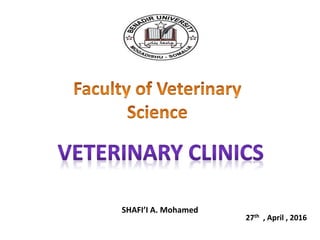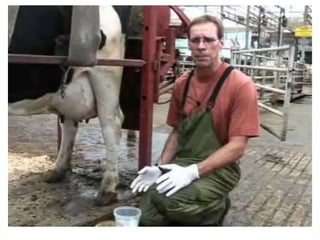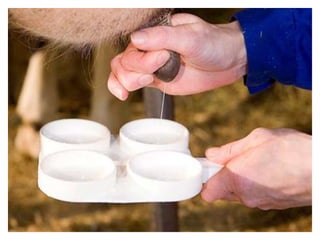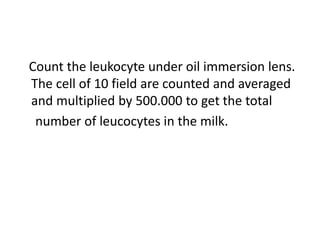This document provides information on procedures for examining urine, skin scrapings, and milk from various animal species. It describes how to collect and store samples, and outlines the steps for chemical, microscopic, and cultural examinations. Key points covered include normal versus abnormal findings for pH, glucose, protein, ketones, bilirubin, blood, and sediments in urine. Examination of milk involves assessing color, odor, consistency, and performing white slide and California mastitis tests to detect inflammation.






































